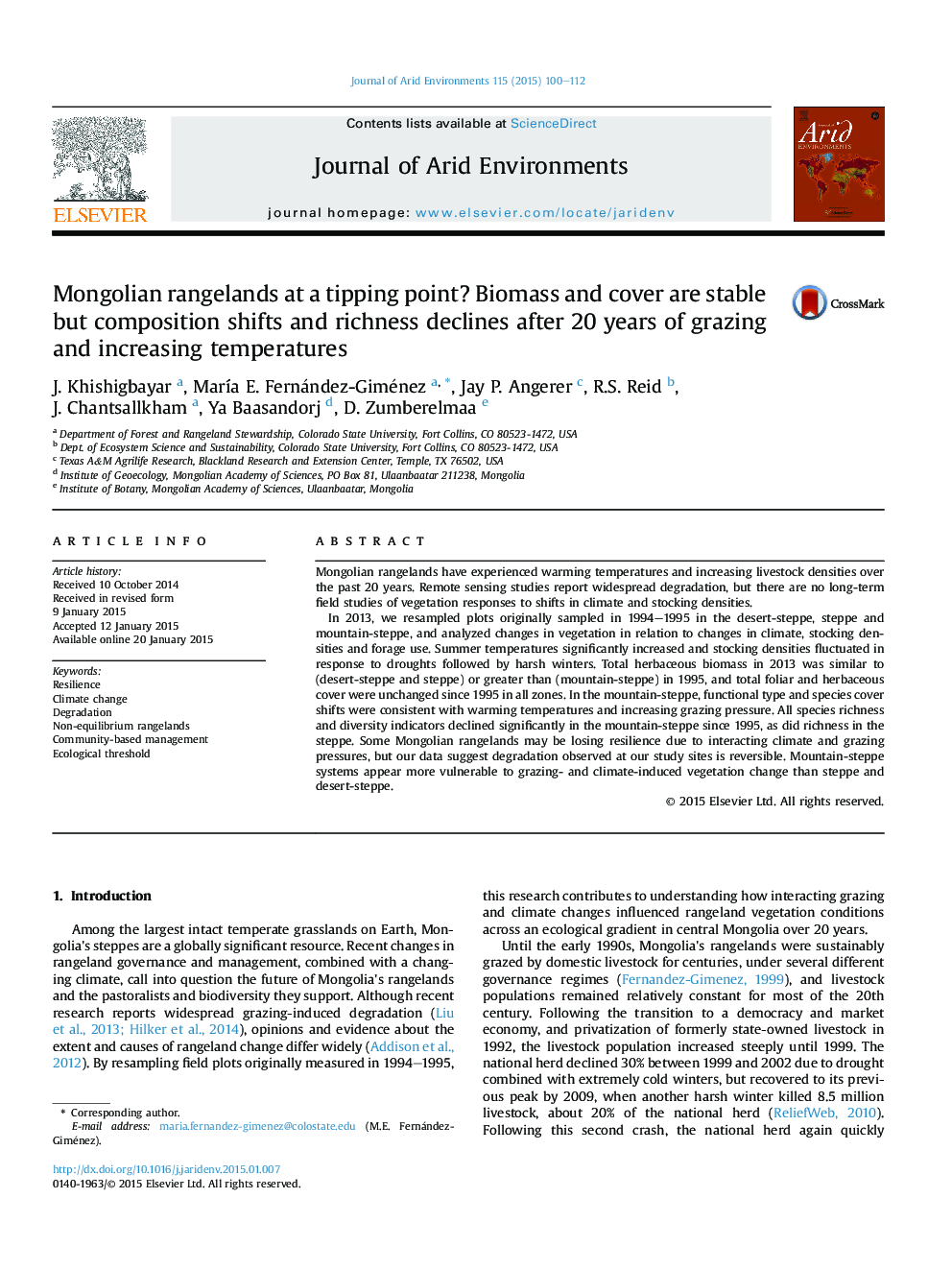| کد مقاله | کد نشریه | سال انتشار | مقاله انگلیسی | نسخه تمام متن |
|---|---|---|---|---|
| 4392937 | 1618244 | 2015 | 13 صفحه PDF | دانلود رایگان |

• Many claims about rangeland degradation in Mongolia have weak empirical support.
• We resampled plots after 20 years to assess vegetation changes and their causes.
• Total plant cover and biomass remained steady or increased over time in 3 eco-zones.
• Mountain-steppe sedges increased and shrubs, key species, and diversity declined.
• In the mountain-steppe, grazing and climate change are causing vegetation shifts.
Mongolian rangelands have experienced warming temperatures and increasing livestock densities over the past 20 years. Remote sensing studies report widespread degradation, but there are no long-term field studies of vegetation responses to shifts in climate and stocking densities.In 2013, we resampled plots originally sampled in 1994–1995 in the desert-steppe, steppe and mountain-steppe, and analyzed changes in vegetation in relation to changes in climate, stocking densities and forage use. Summer temperatures significantly increased and stocking densities fluctuated in response to droughts followed by harsh winters. Total herbaceous biomass in 2013 was similar to (desert-steppe and steppe) or greater than (mountain-steppe) in 1995, and total foliar and herbaceous cover were unchanged since 1995 in all zones. In the mountain-steppe, functional type and species cover shifts were consistent with warming temperatures and increasing grazing pressure. All species richness and diversity indicators declined significantly in the mountain-steppe since 1995, as did richness in the steppe. Some Mongolian rangelands may be losing resilience due to interacting climate and grazing pressures, but our data suggest degradation observed at our study sites is reversible. Mountain-steppe systems appear more vulnerable to grazing- and climate-induced vegetation change than steppe and desert-steppe.
Journal: Journal of Arid Environments - Volume 115, April 2015, Pages 100–112